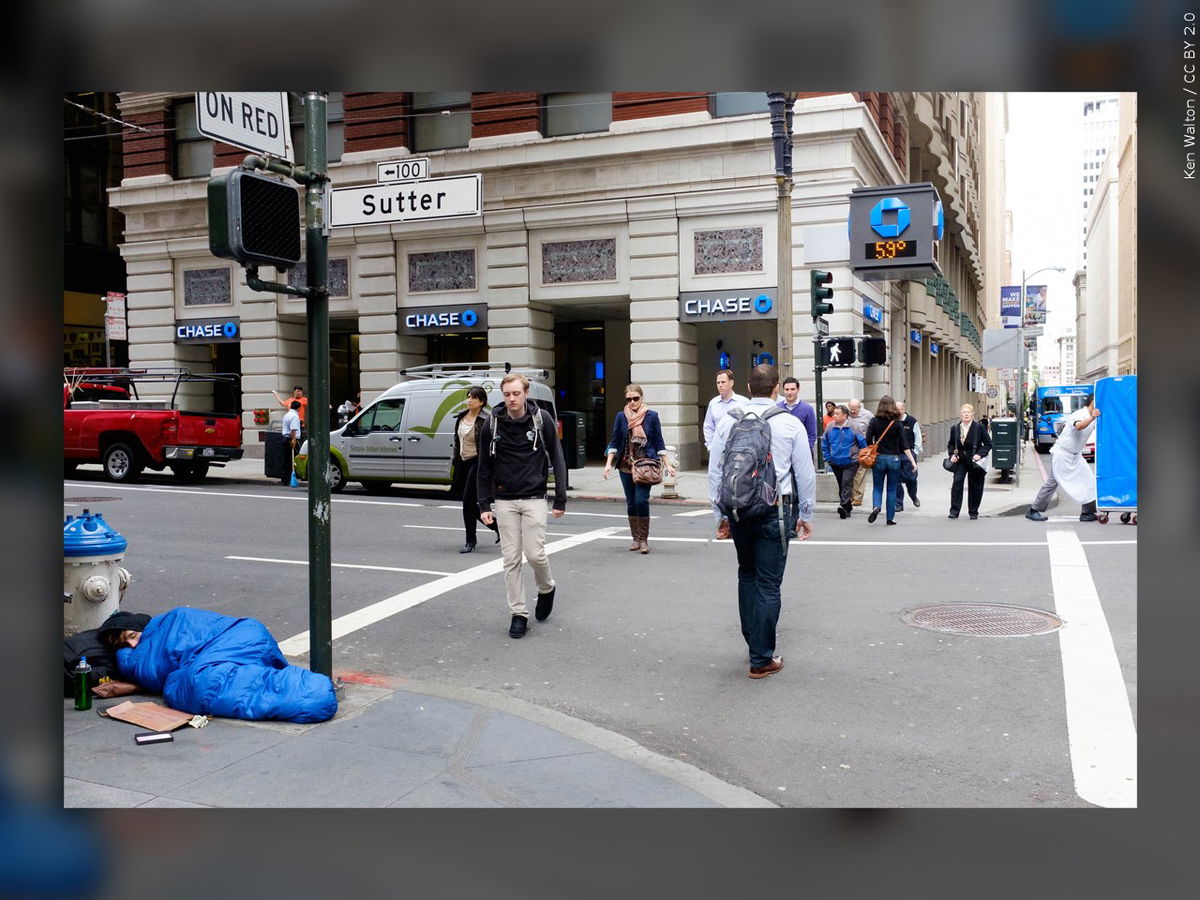Homelessness up in Bay Area, down slightly in San Francisco

SAN FRANCISCO (AP) — Homelessness increased nearly 9% in the San Francisco Bay Area over the last three years, despite hundreds of millions of dollars spent to keep people off the streets during the coronavirus pandemic, preliminary numbers released Monday show. San Francisco appeared to be the one bright spot, seeing homelessness decline slightly.
Alameda County, which includes the city of Oakland, reported a 22% increase in this year’s point-in-time survey, while neighboring Contra Costa County saw a 35% jump in people spotted living in shelters, vehicles or outdoors. The largest county in the region, Santa Clara, reported a 3% increase from 2019, including an 11% increase in the city of San Jose.
San Francisco reported a 3.5% decline to nearly 7,800 homeless residents, which housing advocates chalked up in part to a wealth tax approved by voters in 2018.
In total, seven of the Bay Area’s nine counties reported counting more than 35,000 people experiencing homelessness in late February. The count is required every other year by the U.S. Department of Housing and Urban Development and helps determine funding. San Mateo and Solano counties did not report preliminary numbers Monday.
Housing advocates said increases across the region would have been worse without strong and speedy intervention from the state and local government. California Gov. Gavin Newsom made money available at the start of the pandemic to house homeless residents in hotels and eviction moratoriums helped keep people in their homes.
The San Francisco Bay Area “staved off a catastrophic increase in homelessness” over the last three years, said regional housing advocacy group group All Home in a statement released Monday. The 2021 count was canceled due to the pandemic and this year’s count was conducted in late February.
“Bay Area governments and nonprofits played deep defense on homelessness during the pandemic and we have more or less held the line — but now we need to go on offense and end the suffering on our streets” said Tomiquia Moss, the nonprofit group’s founder and CEO.
San Francisco has often served as the poster city for homelessness given the high visibility of tent encampments. But preliminary figures show a 15% decrease in people who are living unsheltered outdoors and an 11% decline in its chronically homeless single adult population.
The Feb. 23 count in San Francisco found 7,754 people living in shelters, vehicles or outdoors, down from 8,035 in 2019 but still more than the nearly 6,900 reported in 2017. Mayor London Breed credited the numbers to an increase in shelter beds and transitional housing by her administration.
Jennifer Friedenbach, executive director of the city’s Coalition on Homelessness, called the news welcome and exciting, and credited money provided by Prop. C, a tax on San Francisco’s wealthiest companies approved by voters in 2018 for the benefit of homeless residents. The measure, opposed by Breed, divided the city’s tech elite.
“Once we start making a real dent in chronic homelessness, we’ll start going into the extremely low-income population and people without behavioral health issues,” said Friedenbach. “I think we’ve got a lot more great things to come.”
Officials involved with the count in Alameda County said at a news conference Monday that much of the overall increase was driven by a nearly 40% rise in people living in vehicles, including cars and RVs, and a 53% increase in people enrolled in shelter programs.
They also said that its 22% increase over three years was a slower rate than the 20% annual increases it had been seeing.
“We consider this to be a huge success and a direct reflection of the additional resources that were infused into our system,” said Chelsea Andrews, executive director of EveryOne Home, which helped conducted the count.